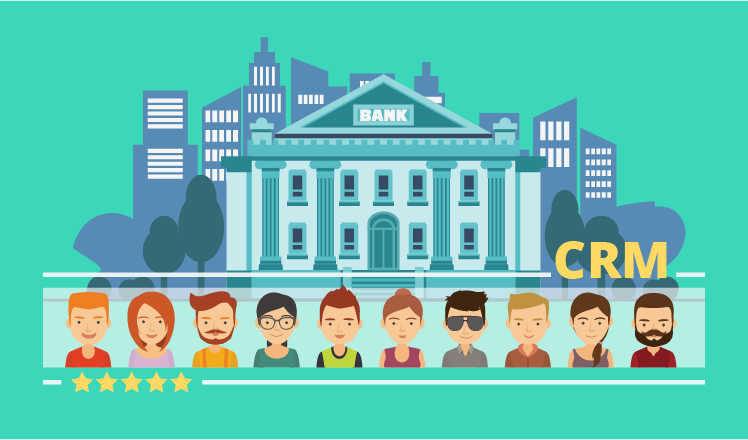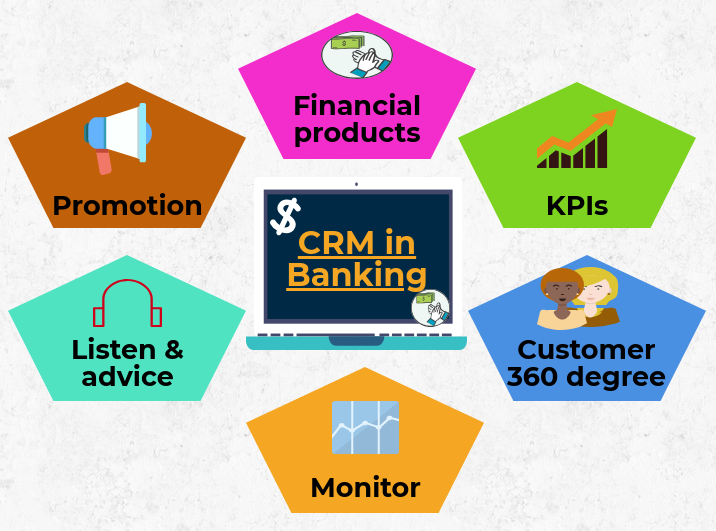
How Banks and Financial Institutions can accelerate Sales, Marketing, and Customer Service with CRM
The ROI from a CRM speaks for itself. A survey from Nucleus Research found that for every dollar spent, CRM pays back $8.71.
One of the biggest challenges of banking in the digital world is meeting customer expectations. You cannot expect to grow your business without keeping customer at the forefront of your services. As various fintech companies continue to create seamless, customer-centered experiences with emerging technology, customers are bound to have greater expectations when it comes to the quality of service and products that banks provide.
Banks and financial institutions must get a step ahead with understanding customer’s preferences in order to avoid the risk of falling behind in the competition. Banks and financial institutions need a modern, customer-focused approach, along with a solution capable of supporting their growth and vision, making CRM’s importance in the banking industry more important now than ever.
What is a CRM in the Banking Industry?
CRM (Customer Relationship Management) solution helps banks and financial institutions manage customer data, interactions, and relationships in order to better understand their needs and provide top-notch service in terms of service/product, support, and communication. Agile’s CRM software for Banking is a solution designed on top of Microsoft Dynamics 365 (Microsoft’s global CRM solution), to enable banks to elevate their sales, marketing, and customer service through automation, total visibility, and control.
- With a powerful, customizable, and highly scalable CRM platform, banks and financial institutions can: Maintain customer information such as contact details, products/services used, and interactions.
- Organize appointments, send personal emails, and respond to social media posts.
- Update customer profiles in real-time with new notes or details.
- Visualize, care for, and manage your sales channel with complete visibility into customer preferences and potential sales opportunities.
- Create reports that analyze customer performance, marketing campaign performance, and more.

Business Benefits of Using CRM Banking
-
Get a 360-Degree View of all customers
CRM banking is an integrated system that can integrate with your other banking systems to provide a single view of all customer accounts. CRM provides complete 360-degree information about customers – from personal details to their specific preferences – and allows banks to market their offerings based on those interests. From making a deposit to an ATM by asking for details about a particular type of loan, all the pre-determined steps a customer takes can be recorded on your CRM. This makes it quicker and easier to gain a deeper understanding of your customers’ habits and interests, which can help you align certain products with their financial goals.
-
Improve customer retention
For customers who choose online banking solutions based on personal experience, planning, building long-term relationships can be difficult for many organizations. With CRM, you have a plethora of information in your hands that can be used to actively deliver personalized services. As your CRM enables you to record customer notes and personal information, you can keep track of all the customer interactions and activities. Showing your customers that you listen to them and making efforts to improve their knowledge of your bank is a proven and trusted way of promoting honesty.
-
Enable faster customer service
With a single, integrated system, any banking employee can access a customer profile to speed up the account. For example, if a customer reaches out to the bank via the call center, the employee they are talking to can make real-time updates to their “timeline” on CRM. When a customer visits a local bank branch, bank accountants will be able to see notes about their contact with the call center. This can eliminate any recurring conversations and give the bank teller a complete understanding of the client’s situation without even having to ask the customer their complaint.
-
Use the information to improve sales efforts
The information in your CRM can be compiled into reports for a deeper understanding of your customers. From there, you can see trends, effective campaigns, and improvements that will help you anticipate customer needs and plan your future marketing efforts. You can also use details in your customer profiles to identify sales and sales locations. For example, if a customer makes a deposit inside a bank, the informant can have a full view of his or her profile and inform the customer of new products that may be of interest to him or her, such as a platinum credit card. The bank can then use this knowledge to upsell their card service to that particular customer through marketing campaigns, enabling smarter and more relevant conversations with the customer.
CRM as the lifeblood of your marketing team: manage communications, campaigns, and events
Today, marketing is a data-driven field. But liking, clicking, and visiting are not the only data points that can help improve your marketing. You need to know how many of those deals are leading to successful sales. When potential customers talk to your banks, what are their biggest concerns, and can they target your marketing to the best-selling businesses? What parts of the loan process give customers problems or prevent them from becoming bankers?
A good CRM can track data from many departments, so a call to customer service or a lost account becomes an opportunity to prepare potential customers to like to bank with you – before they even speak to a bank. CRM also allows your marketing team to host webinars, manage campaigns, and events, integrating well with tools such as Microsoft Teams, Microsoft 365, and Outlook.
CRM solutions are no longer limited to just sales or business standing; rather, they are now essential to any business that provides goods or services. Speaking of which, banks and financial institutions share an important challenge with their customers: they are now in a customer-driven world. Banks and FIs understand and provide services based on the needs of each of their customers, and those who still use sticky notes or excel spreadsheets to manually keep track of accounts, activities, and sales opportunities are more vulnerable to losing the loyalty race and a lot of potential revenue.
CRM, CRM for banking, CRM for Financial Institutions, Customer Relations, Dynamics 365 Marketing, Dynamics 365 Sales, microsoft dynamics 365
